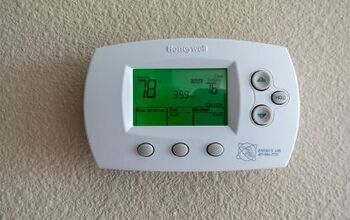Can Fleas Travel Between Apartments?

Dealing with fleas is a nightmare, especially if you aren’t sure where they came from. You can find fleas in your apartment even if you don’t have pets, which can be quite confusing. So, can fleas travel between apartments?
Fleas can travel from your neighbor’s apartment to your apartment via a shared ventilation system. They can crawl through the air ducts and enter your apartment through the return vents. Otherwise, fleas can latch onto you or your pets after interacting with your neighbor if their apartment is infested with fleas.
Other pests, such as mice and raccoons, can also carry fleas into your apartment complex and infest your unit. The key is to act quickly and treat your pets right away to get the problem under control. Follow along as we explore everything you must know about fleas traveling between apartments.
Can You Get Fleas From Your Neighbor?
You can get fleas from your neighbor, and you must act fast to resolve the issue. Fleas can travel between apartments in several ways, including:
1. Hitchhiking
People may not hitchhike as much as they did in the 1970s, but fleas do it all the time. You and your pets can inadvertently bring fleas into your apartment without knowing they were ever on you. This could explain why your apartment suddenly has fleas, and it may relate to your neighbor.
For example, if your neighbor’s dog has fleas and you interact with it, the fleas may latch onto you or your pet. This can even happen if you quickly brush past your neighbor or their dog in the hallway leading to your apartment. Female fleas can lay between 4 and 50 eggs per day, so your apartment can quickly become infested.
In this example, the fleas didn’t directly travel from your neighbor’s apartment to your apartment. However, your neighbor can easily pass their flea problem onto you when you encounter them or their pets.
2. Shared Ventilation
Some apartment buildings and duplexes have shared ventilation between the units. This can ultimately explain how fleas traveled from your neighbor’s apartment into yours. Air ducts can quickly get full of dirt, dust, debris, animal hair, and pests when the blower runs.
There’s a chance that a clump of dog hair that contained fleas or flea egg sacks entered your and your neighbor’s shared ductwork. In that case, the fleas can travel through the air ducts and emerge from one of your return vents. Fleas can even enter air ducts without hitching a ride on a clump of loose dog hair if the infestation is bad enough.
This is more common in poorly built, mismanaged apartments and duplexes. Some landlords and builders cut corners and don’t properly seal the ventilation system. In that case, fleas and other pests can spread throughout several units.
3. Local Wildlife
Depending on where you live, you and your neighbors may have many close encounters with local animals. This can be fun and fulfilling if you love the local wildlife, but it’s not always such a good thing. That’s because many common wild animals, like squirrels, opossums, raccoons, and stray dogs, can carry fleas.
You may interact with a friendly wild animal and enjoy the novel encounter without putting too much thought into it. However, that quick encounter may explain why you and your neighbor suddenly have a flea problem. Ideally, you should avoid interacting with wild animals, or else you may introduce fleas into your apartment, which could also affect your neighbor.
Wild animals can also carry diseases, such as rabies, which isn’t worth risking exposure. Tell your neighbors if you find fleas in your apartment after interacting with local wildlife. That way, your neighbor will know to be on the lookout for fleas in case they travel between apartments.
4. Mice Infestation
The last thing anyone wants to worry about is having two infestations in their apartment at the same time. However, if your apartment is infested with mice and you see fleas, it’s probably because the mice carried them in. That’s especially true if the mice enter air ducts you share with your neighbor’s apartment.
Unfortunately, this problem will require two separate treatments, as fleas will likely remain if you remove the mice. A pest control company will most likely set traps for the mice and spray your apartment for fleas. Of course, it’s always necessary to spray your neighbor’s apartment if that’s where the fleas came from.
That’s why it’s worth talking to your neighbor if you suspect that you have a shared problem. They may not realize that you’re going through the same thing. If you both know about the issue, then you can each take steps to resolve it and prevent future problems.
5. Door Gaps
Many people have gaps beneath their entry doors, and many don’t think much about that. However, door gaps can invite many pests into your home, such as fleas and spiders. This can explain how people in different units can struggle with the same pests in an apartment building.
For example, fleas could easily leave your neighbor’s apartment, crawl under your door gap, and infest your apartment. This can happen if the fleas jump off a dog when your neighbor takes it outside. Fleas are small enough to fit through even the tiniest door gaps.
You can significantly reduce the risk of that happening if you install weatherstripping at the base of your entry doors. That way, fleas and other pests cannot easily enter your apartment through the door gap. Weatherstripping can also help with temperature control and block outside noise on a busy street.
Can You Get Rid Of Fleas Without Bombing?
You can get rid of fleas without bombing, but it requires rigorous treatments and care. First, you must treat your pets with something like Frontline, Capstar, or Revolution Plus. Many of the best topical flea treatments require a prescription, but Frontline is over-the-counter.
Next, you must routinely and thoroughly vacuum your apartment over the next few days. Flea eggs can remain in your carpets and rugs even after treating your pets. That may sound like a pain, but that’s the best way to remove the flea egg sacs from your apartment.
Throughout this process, regularly brush your pets with a clean flea comb. That way, you can dislodge egg sacs that are stuck in your pet’s hair, then immediately vacuum the floor again. This is the easiest way to get rid of fleas without bombing your apartment.
Should I Tell My Landlord About Fleas?
You should tell your landlord about fleas if you live in a multi-unit building or complex. That’s because the flea infestation may affect the other units, which may require extensive treatments. However, it may not be necessary if you rent a house with no units attached and you know it’s not your landlord’s fault.
For example, you may realize that the fleas came from bringing an infested animal into your house. In that case, it’s not your landlord’s responsibility, and it won’t affect anyone else if you don’t share the structure. This can be a bummer, but it is most likely your responsibility if the flea infestation happened as a result of your actions.
You can also get into trouble if you introduce fleas because of your actions if pets aren’t allowed in your apartment. In that case, you may face fines or get evicted if the lease dictates no pets. In that case, you’re better off dealing with it yourself and moving somewhere that allows pets.
Summing It Up
Fleas can travel between apartments that share a ventilation system, as they can travel through ductwork. Your neighbor’s fleas can also enter your apartment through door gaps or hop from their dog to your dog or clothing. Otherwise, fleas can travel between apartments if the complex has a mouse infestation.
Related Guides:

Nick Durante is a professional writer with a primary focus on home improvement. When he is not writing about home improvement or taking on projects around the house, he likes to read and create art. He is always looking towards the newest trends in home improvement.
More by Nick Durante












![The 10 Best Table Saws - [2022 Reviews & Buyer's Guide]](https://cdn-fastly.upgradedhome.com/media/2023/07/31/9070645/the-10-best-table-saws-2022-reviews-buyer-s-guide.jpg?size=350x220)

![10 Best Electric Lawn Mowers - [2022 Reviews & Top Rated Models]](https://cdn-fastly.upgradedhome.com/media/2023/07/31/9070486/10-best-electric-lawn-mowers-2022-reviews-top-rated-models.jpg?size=350x220)












